Diggin' In
Diggin’ In: The Richard Gienger Report
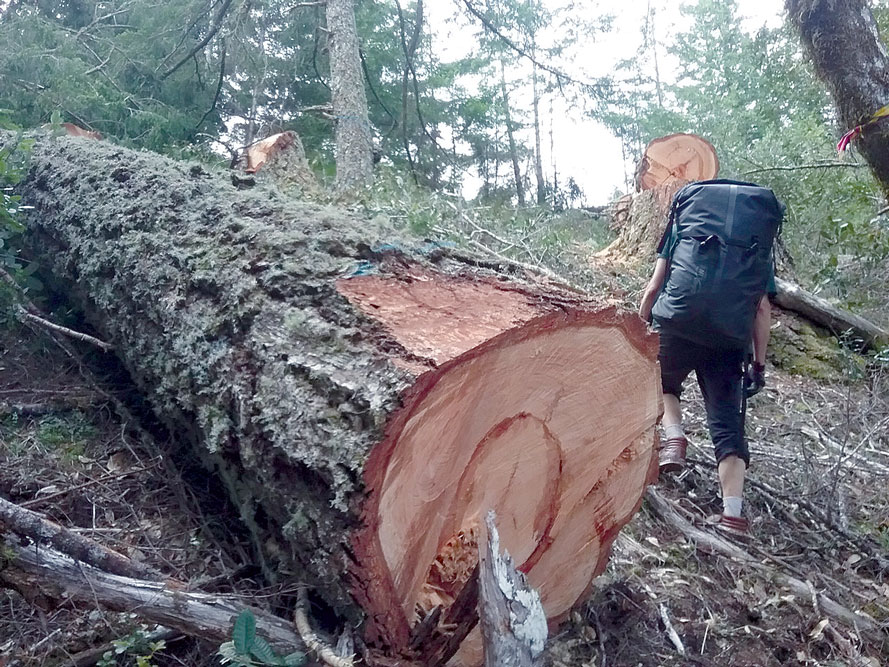
In hindsight, seen through a lens of extreme “positivity” and good fortune, raising a family in the early 1970s on a windswept ridge overlooking the Pacific was pure exhilaration—with multiple opportunities and adventures before us. About 50 years have passed now. What was history before then? What was history since then? What history will the future hold? And now at what scales will our examination be? I don’t have a couple of years or space here to adequately expound on all that needs to be covered, so in large part I will keep it between Fort Bragg and Eureka, eastern ranges of the Eel River Valley, and the Pacific. This column gives a thumbnail sketch about coming to reality grips with restoration and protecting priceless remnants in northwest Mendocino and southwest Humboldt counties. At the end I briefly recap some crucial issues of today.
As I have described before, the “reinhabitors” or “hippies” (even called “dirt bags” or worse) migrated to the region that became known as the Mateel (a blending of the names of the two local rivers, the Mattole and the Eel) in the late 1960s, the 1970s, and still trickling here in the early 1980s. Multiple sagas emerged as heavily logged lands and impacted ranches, mostly considered valueless, were subdivided and sold for as little as $100 an acre. These “new settlers” came from a variety of perspectives, with urban, suburban, and country roots. There was a conscious desire for “new beginnings” coming on the heels of political assassinations in the USA, the Vietnam/American War, Civil Rights, and fresh expectations of new and expanded ideas of what freedom and expression meant. People were looking for new models, and what caused the impacts of the extreme logging and discrimination were not what was sought. There was a bookstore in Briceland that sold, or offered, a popular UC Berkeley monograph entitled “Sinkyone Notes” by Gladys Ayer Nomland with stories from various sources about the Sinkyone people and region, and their relatives’ lifeways and the huge losses starting in the 1850s. One of the most brutal stories told of Sally Bell and her brother escaping a massacre of their whole family at Needle Rock on the Coast. I think she lived until 1938. She and her husband Tom Bell were revered by many, both Indian and non-Indian, who brought her gifts when she and Tom spent their years at Four Corners, where the Briceland and Usal roads cross.
While the reinhabitors were building their homesteads, they were also struggling to earn a living. The post-WWII logging boom had almost entirely played out, with Fort Bragg’s Union Lumber and Scotia’s Pacific Lumber still big factors but mostly on the periphery of much of the reinhabited land. There was a lot of interest in creating jobs to correct damage to the landscape and forest. The Redwood Creek Renewal Project was one such endeavor, and soon after Wild Iris Forestry was established. These and the Forest Lands and Product Cooperative (FLAPCO) and the Institute for Sustainable Forestry (ISF, still kicking) each deserve to be part of recorded history.
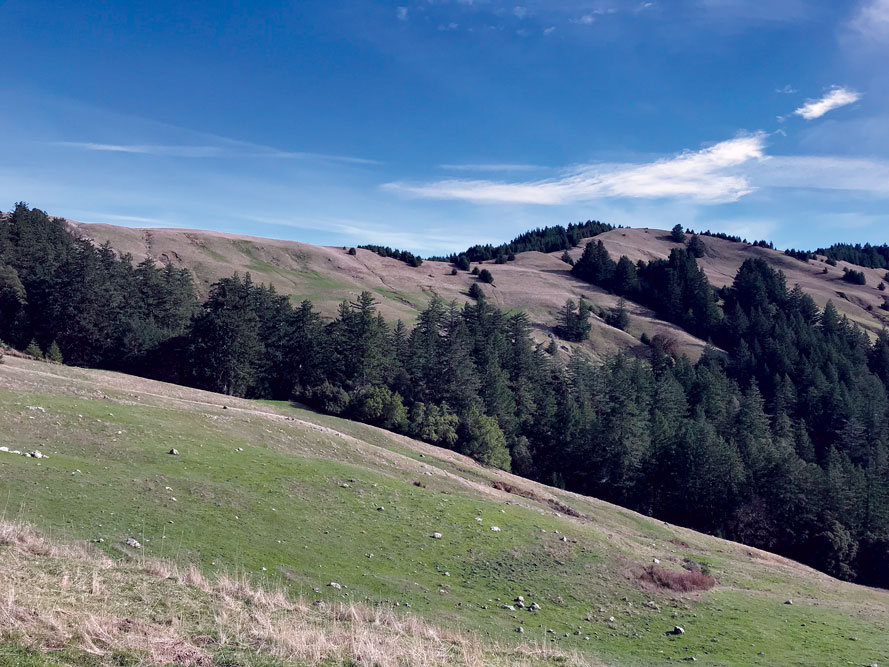
Photo by Michael Evenson
Along with this relative cultural renaissance came multiple land and conservation initiatives, including protection of the King Range, Gilham Butte, Red Mountain, headwaters of the Mattole, the Mattole fisheries and hatchbox and restoration. Again the efforts and organizations involved need to be part of recorded history. In the effort to thread together Sinkyone Wilderness Coast protection rhyme and reason, I have to drastically condense a lot of pertinent realities. One central spur to protection was the founding of the Environmental Protection Information Center (EPIC) during the aerial spraying wars (involving some of the ingredients of the notorious defoliant Agent Orange used in Vietnam). That’s another couple of books right there. Not long afterward, in September 1977, Georgia-Pacific Corporation (which had bought Boise-Cascade, which had bought Union Lumber in the early ’70s) submitted a Timber Harvest Plan (THP) to remove the entire “overstory” of Little Jackass Creek (or Little Wolf Creek) on the coast between Bear Harbor and Usal.
Ironically, this was the same month that the California Department of Parks and Recreation (P&R) had a public hearing in Fort Bragg to combine the Bear Harbor and Usal Projects, and to name and classify the new conglomeration. John Jennings, who had been the P&R Ranger at Bear Harbor since the purchase of the Bear Harbor Ranch in 1975 (a whole other story), helped to alert the public and there was a solid turnout: Ray Raphael, author of a local history, Mel Lynn, founder of a Sinkyone area conservation group, and many others, including families, were present. Everyone spoke strongly in favor of wilderness designation—and then a distinguished-looking man rose as the last speaker (as we all were waiting for the virulent wise-use person to speak for motorized recreation and no protection at all), AND he was the most inspirational speaker for wilderness protection. It turned out that he was William Penn Mott, famous conservationist who was California’s Director of P&R under Governor Reagan, who had for years championed protection for the entire Lost Coast from Cottoneva Creek to the Mattole River. He later was appointed head of the National Park Service by President Reagan. The P&R Commission then combined the Bear Harbor and Usal Projects but delayed naming and taking final action until the next meeting out of deference to Vivian Hailstone, an honored Hoopa woman on the Commission who had been unable to attend the Fort Bragg meeting. The next month the new unit was named Sinkyone Wilderness State Park with the understanding that large areas would become part of the California Wilderness System.
What followed was an incredible fight involving hundreds of people: THP by THP, P&R Commission meeting by Commission meeting, Board of Forestry and Coastal Commission, action in the California Legislature and elsewhere. The California Department of Forestry (CDF) backed Georgia-Pacific Corporation (G-P) down into cutting the amazing remnant old-growth forest on the coast in two stages and approved clearcuts of 40 and 80 acres. There was strong and persistent resistance to G-P and CDF for the next six years. Cultural and archaeological issues were huge, although CDF insisted it wasn’t a Native American issue. This was also a strong time for resistance to coal and uranium mines in Arizona and in support of traditional Navaho people and their lands. Many a benefit was held at Beginnings in Briceland with the International Indian Treaty Council (IITC) represented by Bill Wahpepah, Tom LeBlanc, Dennis Jennings, and so strong and inspirational, John Trudell, and always good music.
G-P’s operations were destroying sites. They were formally charged in one major destruction when an irreparable site was bulldozed for a layout pad for an old-growth redwood. We were very disappointed that the judge at Leggett Court did not require consultation at every instance with Indian representatives, but a complete survey was required for the 50,000-acre G-P Usal Unit. Walt Lara, Yurok elder, still alive, and a founder of both the Northwest Indian Cemetery Protective Association (with Milton Marks) and the Native American Heritage Commission, were both present in the courtroom.
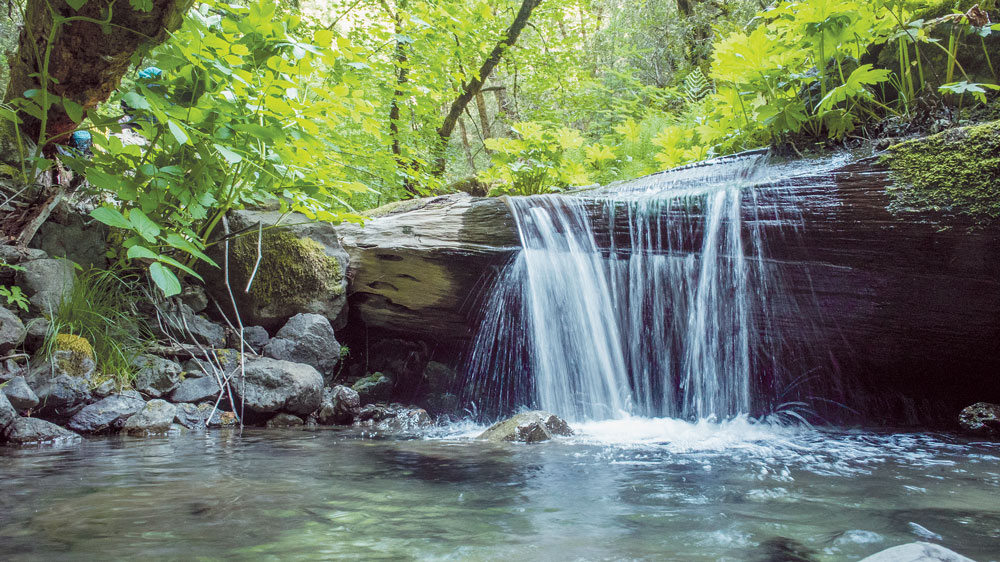
There are many important details that I can’t go into here due to space constraints, but the upshot is that G-P came back in 1983 with a new THP to liquidate the remaining 120 acres or so of old growth (which soon became known as the Sally Bell Grove.) This was the proverbial last straw. EPIC with Sharon Duggan, Jay Moller, and Michael Solomon prepared litigation. Earth First!ers fresh from the non-violent (on the EF! side) battle for the Kalmiopsis Wilderness in Oregon came and trained non-violent affinity groups. EPIC was fully committed. Bill Wahpepah brought on the IITC, Coyote joined as a Wailaki Indian individual plaintiff. Robert “Woods” Sutherland and I went on as individual plaintiffs also. Around this time the InterTribal Sinkyone Council was starting up with the work of Ricardo Tapia and Priscilla Hunter. Many persons civilly defended the Grove, stopping or slowing cutting at great hazard. Mem Hill was injured by falling timber. At least seven were arrested, some kept overnight in the Mendocino County jail, and the second wave of arrestees were released on arrival. [This may be an incomplete list, but pretty close: Raven Dushay, Robin Mitchell, Nancy Peregrine, Sandy Tilles, Marie Mills, Stephanie Lusak, Janice Sadon, Estrella Quiroga, Deborah Orlando.] The Mendocino Court ruled against EPIC and the IITC but gave a slim opportunity to take the case to the California Court of Appeals. Fallers were hard at work when a Stay came through from the Court.
It wasn’t until Summer of 1985 that the Court made its ruling: CDF was required to consider cumulative impacts and hadn’t, was required to adequately consult with California Indians and Tribes and hadn’t, was required to assure all Californians that the Native American Heritage was protected and hadn’t, and violated important procedures adversely affecting the public. So much for saying that logging on the Sinkyone Wilderness coast, or elsewhere, was not an Indian issue. A strong case can be made that this decision continues to not be substantively implemented. The identical THP was resubmitted almost immediately by G-P with only the date changed. One surreal moment in the Mendocino Court in 1983 occurred when the Johnson in EPIC v. Johnson (he had approved the THP), in response to the question, “Do you believe that CDF is required to consider cumulative effects?” He said, “No, but if they are, they did.”
I’m having to leave a lot out. In 1986 the Trust for Public Land signed an option to purchase the coast land. Save-the-Redwoods League and the California Coastal Conservancy came on as partners, with $3.4 million as a base sum set aside for acquisition by legislative action in 1980 for G-P’s 7,800 acres. The InterTribal Sinkyone Wilderness Council was formally founded in 1986 as a consortium of Federally Recognized Tribes. After continued protracted struggle with interests that wanted to continue motorized recreation and logging in protected areas, the ITSWC acquired approx. 3,800 acres for the InterTribal Sinkyone Wilderness in 1997. An additional 160 acres were added at Four Corners in 2012. Issues remain along the Sinkyone Wilderness coast, such as public impacts (including wildfire) at Usal, road access to Bear Harbor and recovery of coastal prairies, and maintenance of Usal and Needle Rock roads ($1 million to fix just one slide north of Needle Rock and a planned $5 million new bridge over Usal Creek). Despite many obstacles, reconnection of Indigenous people and land protection continues.
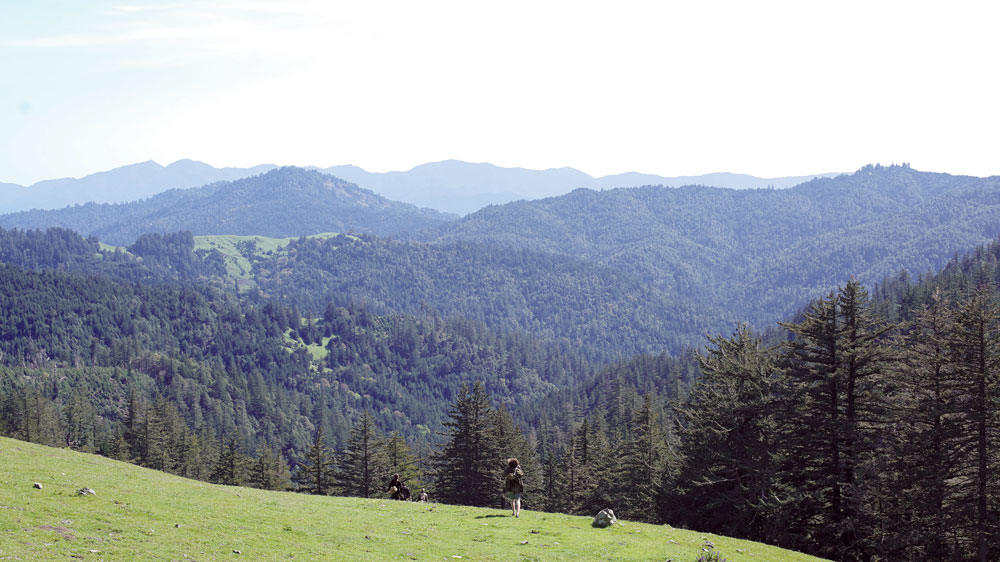
And now…
A short recap of some priority current issues and/or circumstances. These are aside from, but certainly connected to, the national and world context of oppression, depletion, and political/social bankruptcy.
Join the effort to protect and conserve 18,000 acres of the Rainbow Ridge area. This is comparable to the Sinkyone Wilderness Coast struggle. This is envisioned into the future as being accomplished by a set of partners that will honor Indigenous stewardship and carry out actions for recovery. Bound up in this struggle—you get a two-for-one issue!—is recovering the original intent and standards of certification by the Forest Stewardship Council (FSC). The Lost Coast League and allies are engaged in a Byzantine appeal process that is failing to bring corrective measures to herbicide use and high-conservation-value forest designation (both judged by FSC to be substantive grievances). Additionally, Humboldt Redwood Company is failing to respond to the needs and mores of communities affected by their operations—a major precept of FSC certification. See the video: U.N. Climate Conference FSC Video / Protect Rainbow Ridge, vimeo.com/376767281 Visit LostCoastLeague.org or email [email protected] for more info.
Insist on California setting a course that will take generations of commitment to return healthy, high-quality forests to our region—and not settle for 5 years of “stepped-up pace and scale” of thinning and prescribed fire. Attaining larger and older trees is integral to fighting climate change and as necessary as human communities’ need to reform settlement patterns and impacts. See Why Forests Matter’s website, and for California’s emergency moving parts, processes, documents, and recordings, go to
fmtf.fire.ca.gov
Support the forest models Jackson Demonstration State Forest, RFFI/URF, and others that enable direct human and long-term benefit while recovering quality forested watersheds. Search: Jackson Demonstration State Forest, California, for the story of how a completely cut and burned forest in 1946 grew to be the foremost example today of the high-quality forest intended under the 1973 Forest Practice Act. Please stay connected at Forests Forever website for information you need to act for forest protection and recovery. Support recovery and health of the land and people of the Klamath River—including removing the dams—and a host of other issues with Indigenous perspectives. There is an every-Friday-at-noon Zoom webinar through August 28th, cosponsored by HSU’s Department of Native Studies and Save California Salmon (see article on page 3). Cutcha Risling Baldy, PhD and Head of the Department, along with Regina Chichizola are main facilitators, with incredible guests and topics each week. You can register at tinyurl.com/y9sym12d and get more information at www.californiasalmon.org. The whole series is being recorded and will be available.
Support “water protectors” and bringing back the salmon that were removed from the McCloud River and taken to New Zealand. Search in your browser for Caleen Sisk and McCloud River Salmon. You will get a wealth of information about Chief Caleen Sisk and the Winnemem Wintu and their battle to get their salmon back from New Zealand, where they were taken before the runs were wiped out by Shasta Dam.
Support dam removal in the Eel River, eelriver.org. Keep on top of the “two-basin solution”: complex, much intrigue, in-factions and out-factions, nasty history, and human and salmon future in the lurch.
Support forestry that avoids clearcutting and herbicides. This industry norm is now being visited on over 9,000 acres of Sproul Creek watershed upstream of Redway/Garberville by Green Diamond Resource Company.
Please help out where and when you can. Check out the workshop tour programs and other information for Sanctuary Forest, the Institute for Sustainable Forestry (ISF), and EPIC.
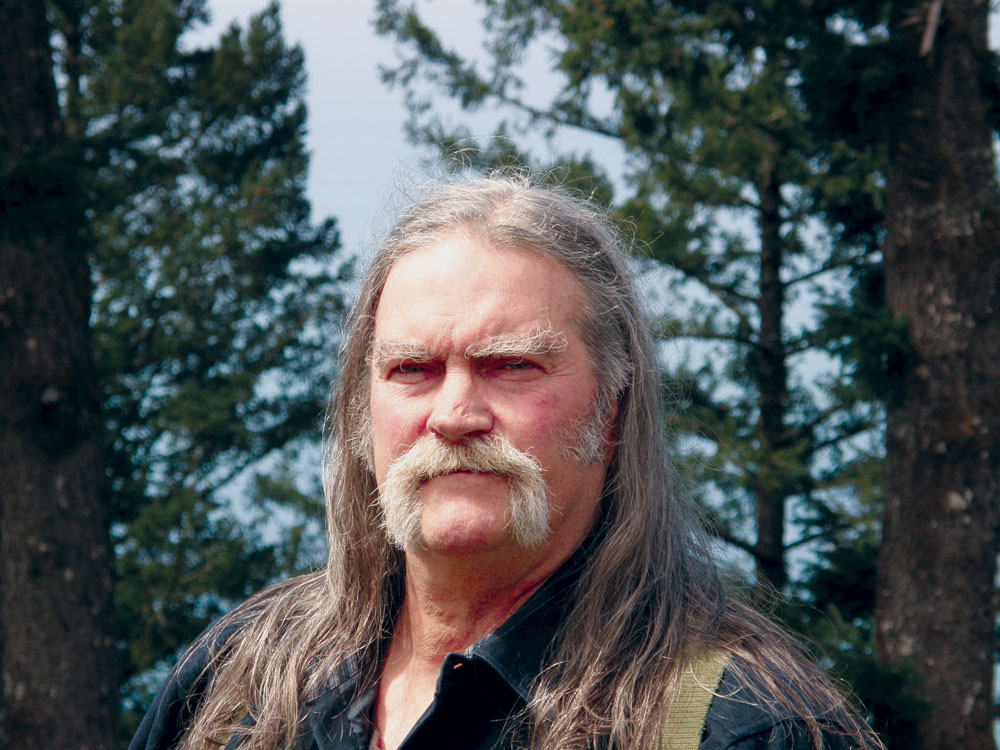
Since arriving in the Mattole Valley of Humboldt County in 1971, Richard Gienger has immersed himself in homesteading, forest activism, and watershed restoration. Richard’s column covers a range of issues including fisheries and watershed restoration and forestry, plus describes opportunities for the public to make positive contributions in the administrative and legislative arenas as well as in their own backyards.
